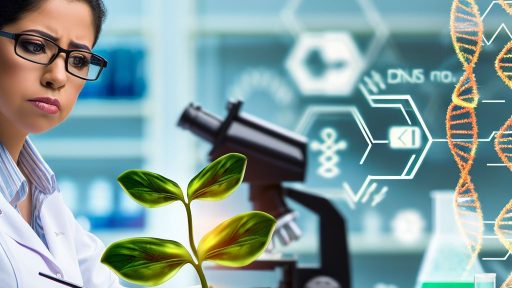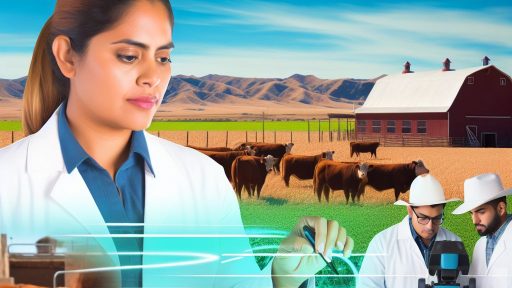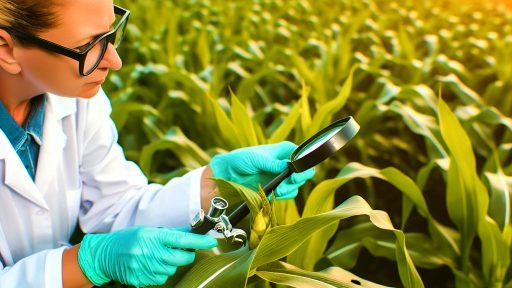Introduction to Data-Driven Decision Making in Agriculture
Data-driven decision making transforms agriculture into a more analytical field.
Farmers now utilize data to enhance productivity and efficiency.
This method involves collecting and analyzing data to inform agricultural practices.
Consequently, it allows for better planning and resource allocation.
The Importance of Data in Agriculture
Data serves as the backbone of modern agricultural strategies.
It enables farmers to understand crop growth patterns and weather changes.
Additionally, it helps identify efficient irrigation practices.
Farmers can forecast yields with greater accuracy through data analysis.
Moreover, data insights allow for timely interventions in crop management.
Tools and Technologies for Data Collection
Various tools facilitate data collection in agriculture.
Drones capture aerial images for field analysis.
IoT sensors monitor soil moisture and nutrient levels.
Data management software streamlines information processing.
These technologies empower farmers to make informed decisions across their operations.
Benefits of Data-Driven Decision Making
Data-driven decision making offers numerous benefits to farmers.
Transform Your Agribusiness
Unlock your farm's potential with expert advice tailored to your needs. Get actionable steps that drive real results.
Get StartedIt increases overall productivity and reduces waste.
Additionally, this approach leads to cost savings in resource usage.
Farmers can adapt to market trends by analyzing consumer data.
Ultimately, these strategies contribute to sustainable farming practices.
Challenges to Implementation
Implementing data-driven techniques can pose challenges.
Many farmers lack access to the necessary technology.
Additionally, there is often a steep learning curve associated with new tools.
Data management requires both time and resources, which can be limiting factors.
Nonetheless, overcoming these obstacles yields considerable long-term advantages.
Importance of Data in Modern Agriculture Practices
Enhancing Decision Making
Data plays a crucial role in modern agriculture.
Farmers can make informed decisions based on analytics.
It allows them to optimize cropping strategies effectively.
Moreover, real-time data enhances responsiveness to changes.
This leads to improved resource management.
Increasing Crop Yield
Utilizing data contributes significantly to increasing crop yields.
Farmers analyze soil health and weather patterns.
This knowledge helps them choose the best planting times.
Additionally, data-driven insights guide fertilization practices.
Consequently, farms can achieve greater productivity.
Reducing Costs
Data analysis helps farmers identify cost-saving opportunities.
For instance, it allows for precision irrigation.
This method reduces water wastage effectively.
Furthermore, tracking pest populations can minimize pesticide use.
Thus, farmers can maintain profitability while being eco-friendly.
Showcase Your Farming Business
Publish your professional farming services profile on our blog for a one-time fee of $200 and reach a dedicated audience of farmers and agribusiness owners.
Publish Your ProfileImproving Sustainability
Data-driven practices enhance sustainability in agriculture.
Farmers can monitor environmental impacts closely.
This information supports responsible land management practices.
Moreover, it fosters compliance with regulations and standards.
Ultimately, this leads to healthier ecosystems.
Increasing Competitiveness
In today’s market, data gives farmers a competitive edge.
Access to analytics allows for better market positioning.
Farmers can respond swiftly to consumer demands.
Moreover, data can highlight new business opportunities.
As a result, they can expand and innovate beyond traditional methods.
Types of Data Used in Agricultural Decision Making
Quantitative Data
Quantitative data plays a significant role in agricultural decision-making.
This data includes numerical information essential for analysis.
For instance, crop yield figures provide insights into production levels.
Farmers often track rainfall amounts to evaluate water availability.
Additionally, statistical models utilize quantitative data to forecast trends.
Qualitative Data
Qualitative data complements quantitative data effectively.
This type involves non-numerical insights gathered from observations.
For example, farmer interviews can reveal traditional practices and beliefs.
Moreover, qualitative data captures consumer preferences regarding food quality.
Such information helps tailor agricultural strategies to market demands.
Geospatial Data
Geospatial data utilizes various technologies to enhance agricultural planning.
Remote sensing and GPS technologies provide detailed field analyses.
Farmers can map soil types and nutrient levels accurately.
This data aids in making informed decisions about crop rotation.
Furthermore, geospatial data can optimize irrigation practices to conserve water.
Weather Data
Weather data significantly influences agricultural operations.
Farmers rely on forecasts to plan planting and harvesting schedules.
Information about temperature and precipitation patterns can mitigate risks.
Additionally, historical weather patterns inform long-term farming strategies.
Access to accurate weather data enhances overall yield performance.
Market Data
Market data provides vital information about pricing and demand trends.
Producers analyze this data to set competitive prices for their products.
Market surveys offer insights into consumer needs and preferences.
Furthermore, understanding market fluctuations helps farmers make informed choices.
Ultimately, this data drives sales and revenue growth for agricultural businesses.
See Related Content: Innovations in Controlled Environment Agriculture for Modern Farms
Tools and Technologies for Collecting Agricultural Data
Introduction to Agricultural Data Collection
Agricultural data collection is essential for enhancing productivity.
It allows farmers to make informed decisions based on analyzed information.
Additionally, using technology improves the accuracy of data collection.
Types of Data Collection Tools
Several tools facilitate data collection in agriculture today.
Showcase Your Farming Business
Publish your professional farming services profile on our blog for a one-time fee of $200 and reach a dedicated audience of farmers and agribusiness owners.
Publish Your ProfileThese tools range from simple devices to sophisticated technologies.
Field Sensors
Field sensors provide real-time data on soil conditions.
They monitor moisture levels and nutrient content effectively.
Farmers can use this data to optimize irrigation practices.
Drones
Drones offer aerial imaging capabilities for large fields.
They help farmers assess crop health and monitor growth patterns.
Moreover, drones can identify pest infestations early.
Mobile Apps
Mobile applications simplify data entry and management.
Farmers can record observations and track progress easily.
These apps often include weather forecasts for better planning.
Data Management Technologies
Data management is crucial for analyzing collected information.
Effective technologies streamline data processing and storage.
Cloud Computing
Cloud computing provides scalable storage solutions for large datasets.
Farmers can access their data from anywhere at any time.
Additionally, cloud platforms enable collaborative data analysis.
Artificial Intelligence
Artificial intelligence enhances data analysis through predictive modeling.
It helps farmers forecast yields and plan resource allocation accurately.
Furthermore, AI can identify trends in historical data.
The integration of these tools significantly benefits farmers.
By leveraging technology, they can optimize agricultural practices.
This leads to increased yields and sustainable farming methods.
Delve into the Subject: Innovations In Automated Machinery For Precision Agriculture
Case Studies: Successful Data-Driven Practices in Agriculture
Precision Agriculture in Corn Production
Precision agriculture revolutionizes corn farming techniques.
Farmers leverage GPS technology and sensors to collect data.
This data helps them evaluate soil health and moisture levels.
As a result, they apply fertilizers more efficiently.
This practice boosts corn yields while minimizing resource waste.
Smart Irrigation Techniques
Smart irrigation uses weather data and soil sensors for optimal watering.
Farmers can determine when and how much water to apply.
This approach conserves water and enhances crop growth.
For instance, Emily Roberts, a grape farmer, implemented smart irrigation.
Her vineyard saw a 30% reduction in water usage.
Data Analysis in Livestock Management
Farmers utilize data analytics to enhance livestock health.
Wearable devices track animal movement and vital signs.
This data helps detect illnesses early and manage feeding schedules.
In turn, livestock productivity increases significantly.
David Thompson reports that his dairy farm’s output jumped by 15%.
Crop Disease Prediction Models
Advanced algorithms are identifying potential crop disease outbreaks.
Farmers use predictive analytics to protect their crops.
By analyzing historical data, they anticipate disease risks effectively.
Showcase Your Farming Business
Publish your professional farming services profile on our blog for a one-time fee of $200 and reach a dedicated audience of farmers and agribusiness owners.
Publish Your ProfileJohn Martinez, a wheat farmer, relies on this method to safeguard his fields.
His timely interventions have reduced crop losses remarkably.
Market Trends and Pricing Strategies
Data-driven insights guide farmers in understanding market trends.
Farmers can analyze consumer demand and set optimal pricing strategies.
Linda Carter utilizes market analysis tools for her berry farm.
She adjusts her sales according to seasonal demand, maximizing profits.
This strategic approach keeps her business competitive in the market.
Gain More Insights: How Farmers Can Benefit From Blockchain Technology In Supply Chains

Challenges and Barriers to Implementing Data-Driven Decisions
Technological Limitations
Accessing advanced technology poses a significant challenge for many farmers.
Many agricultural businesses lack the necessary infrastructure.
This limited capability often hampers data collection efforts.
Furthermore, outdated equipment can lead to inaccurate data analysis.
Data Complexity
The sheer volume of data can overwhelm farmers and stakeholders.
Analyzing diverse data sources requires specialized skills and knowledge.
Additionally, understanding complex algorithms remains a barrier for many.
This complexity often leads to underutilized data insights.
Cost Considerations
Implementing data-driven technologies incurs significant costs.
Many small-scale farmers struggle to secure the necessary funding.
Moreover, ongoing maintenance and updates add to these expenses.
Thus, many farmers hesitate to invest in data solutions.
Training and Education
Farmers often lack training in data analysis techniques.
This skills gap limits their ability to leverage available data.
Moreover, educational resources on data usage remain scarce.
As a result, farmers may feel overwhelmed and unsupported.
Cultural Resistance
Some agricultural communities resist adopting new technologies.
This reluctance stems from traditional farming practices and mindsets.
Consequently, farmers may undervalue the benefits of data-driven decisions.
Building trust in data applications remains essential for change.
Regulatory and Privacy Concerns
Regulatory frameworks surrounding data use can complicate implementation.
Farmers worry about data ownership and privacy issues.
Furthermore, compliance with regulations can create additional hurdles.
Thus, these concerns may deter farmers from fully embracing data-driven methods.
See Related Content: Essential Agri-Fintech Tools That Every Modern Farmer Should Use
Future Trends in Data Utilization for Agricultural Innovations
Emerging Technologies
Emerging technologies are transforming the agricultural landscape.
These technologies include machine learning and artificial intelligence.
Farmers use drones to gather data about crop health.
Additionally, satellite imagery provides insights into land usage.
Farmers are also leveraging Internet of Things (IoT) devices.
These devices enable real-time monitoring of farm conditions.
Consequently, these advancements lead to more informed decision-making.
Showcase Your Farming Business
Publish your professional farming services profile on our blog for a one-time fee of $200 and reach a dedicated audience of farmers and agribusiness owners.
Publish Your ProfilePrecision Agriculture
Precision agriculture is becoming increasingly popular.
This approach uses data analytics to optimize farm outputs.
Farmers adopt variable rate technology to apply fertilizers efficiently.
This method reduces waste and enhances yields.
Furthermore, predictive analytics helps forecast crop performance.
By analyzing weather patterns, farmers make timely adjustments.
Overall, precision agriculture maximizes resources and minimizes costs.
Sustainability through Data
Data-driven decisions promote sustainable farming practices.
Farmers can track resource usage and minimize environmental impact.
Additionally, data helps identify areas needing conservation efforts.
Smart irrigation systems conserve water through data insights.
Using data, farmers enhance soil health for long-term productivity.
Consequently, sustainable practices become more achievable.
Data Collaboration
Collaboration among stakeholders enhances data utility in agriculture.
Farmers, researchers, and tech companies can share vital information.
This collective approach accelerates innovation and problem-solving.
Partnerships with universities lead to breakthroughs in crop science.
Furthermore, organizations like AgFunder support agri-tech startups.
These collaborations foster a culture of continuous improvement.
Regulatory and Ethical Considerations
As data usage in agriculture increases, so do regulatory concerns.
Data privacy is a significant issue that needs addressing.
Farmers must be aware of compliance regulations on data sharing.
Furthermore, ethical considerations arise with AI usage.
Ensuring responsible data usage will build trust in technology.
Stakeholders need to develop guidelines for ethical data practices.
Ultimately, a responsible approach will benefit all involved.
Best Practices for Integrating Data-Driven Approaches in Farming
Embrace Advanced Technologies
Adopting technology is crucial in modern agriculture.
Farmers should utilize tools like precision agriculture.
This technique allows for efficient resource management.
Furthermore, drones can monitor crop health effectively.
GPS technology enhances field mapping accuracy.
All these technologies improve overall productivity.
Collect Relevant Data
Data collection forms the backbone of informed decision-making.
Farmers need to gather data on soil health rigorously.
Additionally, tracking weather patterns can aid in planning.
Crop yield records also provide insights into performance.
Utilizing sensors can help monitor irrigation needs continuously.
Finally, utilizing data analytics helps in interpreting this information.
Engage in Continuous Learning
Staying updated with industry trends is essential.
Farmers should participate in workshops or training sessions.
Showcase Your Farming Business
Publish your professional farming services profile on our blog for a one-time fee of $200 and reach a dedicated audience of farmers and agribusiness owners.
Publish Your ProfileThis helps them understand new advancements in technology.
Networking with peers can also provide valuable insights.
Furthermore, online resources can be a great help.
Collaborate with Experts
Collaboration enhances decision-making capabilities.
Farmers should seek guidance from agricultural specialists.
Consulting with data scientists can optimize data usage.
Additionally, partnerships with universities can foster innovation.
Collaboration promotes sharing best practices in farming.
Implement Actionable Insights
Analyzing data yields actionable insights for farmers.
Implementing these insights can lead to significant improvements.
Utilize recommendations to enhance crop yield and quality.
Moreover, data-driven suggestions can reduce costs effectively.
Farmers should track the outcomes of these implementations.
Evaluate and Adjust Strategies
Regular evaluations are vital for continued success.
Farmers should assess the effectiveness of their strategies.
Adjustments based on performance can optimize results.
Additionally, continuous monitoring of external factors is necessary.
Flexibility in approach can lead to better adaptability.
Additional Resources
North Carolina A&T College of Agriculture and Environmental …




